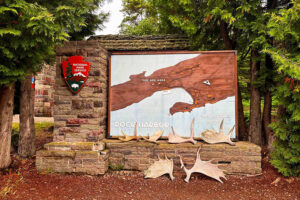When one fashion collector bought a stately Victorian dress at an antique mall over a decade ago, she didn’t know she stood at the threshold of a stubborn mystery. Or that the code she discovered would finally break over, of all things, weather reports.
But that’s what happened to Sara Rivers Cofield, who stumbled onto a puzzling code inside the 1880s-era silk gown. Rivers Cofield purchased the dress for $100 in 2013, then found cryptic phrases scrawled on notes inside a hidden pocket.
Clearly the items were encrypted. Two focal examples read “Bismark Omit leafage buck bank / Paul Ramify loamy event false new event.”

Notice topmost two lines. Photo: Rivers Cofield
Rivers Cofield promptly posted the material on the internet — and ran into a long delay in gratification.
Code solved
The codes finally fell into the hands of Wayne Chan, a data analyst at the University of Manitoba. Thinking the messages pertained to telegraphic codes from the dress’ vintage era, Chan pored over thousands of pages of reference books from the time.
A first effort, in 2018, fizzled after a few months. But while the code’s reputation ballooned as cryptologists vaunted it for resisting “voracious code-breaking teeth,” Chan broke through.
One of Chan’s books fell open to a section on the U.S. Army Signal Corps. The lead seemed promising, based on vocabulary and structures the book shared with the dress. With ongoing work and a little help from the National Oceanic and Atmospheric Administration (NOAA), the code finally cracked.
Chan sourced NOAA librarians to help him link the dress codes to weather observations from Texas, Indiana, Illinois, Mississippi, and a variety of other locations on May 27, 1888, the Washington Post said.
Still — details about the dress’s first owner remain unclear.
“Despite the fact that hundreds of coded weather telegrams were sent each day, it is probable that the messages were considered ephemera and rarely archived,” Chan wrote in a paper published in the journal Cryptologia. He therefore assessed the findings are “invaluable” to the study of meteorological history.
What it all means
“Bismark Omit leafage buck bank” indicated the reading was taken at Bismarck station, in the Dakota Territory. “Omit” stood for an air temperature of 56˚F and pressure of 0.08 inches of mercury, the New York Times reported, noting the NOAA advised that the actual reading could have been higher. “Leafage” put the dew point at 32˚F, observed at 10 p.m. “Buck” meant clear weather, no precipitation, and a north wind. “Bank:” 12 mile per hour winds and a clear sunset.
Chan has made it clear that cracking the code felt stimulating. But the reason the notes were concealed in the dress, and the wearer’s impulse to transmit them? These remain mysteries.
“It’s tantalizing,” said Rivers Cofield — noting a paper tag stitched into the dress said the name “Bennet” on it. “Presumably, whoever did that is the last person who owned the dress, and presumably, the last person who owned the dress put the code in the pocket.”






